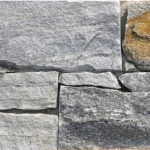Introduction
Cultured stone, also known as manufactured stone or faux stone, is a popular building material that mimics the look and feel of natural stone. It is widely used in both residential and commercial construction projects due to its versatility, durability, and cost-effectiveness. One of the key characteristics that make cultured stone so appealing is its texture. In this article, we will delve deep into the rich texture of cultured stone, exploring its various types, applications, and advantages.
Understanding Cultured Stone Texture
Cultured stone is made by casting concrete molds that are designed to replicate the texture and appearance of natural stone. culture stone allows for a wide range of textures to be created, offering builders and homeowners a plethora of options to choose from. The texture of cultured stone can vary depending on the type of stone being replicated, as well as the manufacturing process used. Some common textures of cultured stone include:
1. Rough-Cut Texture: This texture mimics the rugged, natural look of quarried stone. It features uneven edges and a rough surface that adds depth and character to any structure.
2. Smooth Texture: Smooth-textured cultured stone has a sleek, polished surface that adds a touch of elegance to buildings. It is often used in modern and contemporary designs.
3. Tumbled Texture: Tumbled cultured stone has a weathered, aged appearance that gives it a rustic charm. It is perfect for creating a timeless, old-world look.
4. Split-Face Texture: This texture features a rough, uneven surface that resembles natural stone that has been split along its natural grain. It adds a sense of authenticity and depth to any project.
5. Ledge Texture: Ledge-textured cultured stone has a layered, stacked appearance that mimics the look of natural ledgestone. It is ideal for creating a rustic, traditional aesthetic.

Applications of Cultured Stone Texture
The rich texture of cultured stone makes it a versatile building material that can be used in a wide range of applications. Some common uses of cultured stone texture include:
1. Exterior Cladding: Cultured stone is often used to clad the exterior of buildings, adding texture and visual interest to facades. Its durability and weather resistance make it an ideal choice for enhancing the curb appeal of homes and commercial properties.
2. Interior Accent Walls: Cultured stone texture can also be used to create stunning accent walls in interior spaces. Whether it's a fireplace surround, a feature wall in a living room, or a backsplash in a kitchen, the textured finish of cultured stone adds warmth and character to any room.
3. Landscaping Features: Cultured stone texture can be incorporated into landscaping features such as retaining walls, garden borders, and outdoor fireplaces. Its natural look blends seamlessly with the surrounding environment, creating a cohesive and harmonious outdoor space.
4. Architectural Details: Cultured stone texture can be used to enhance the architectural details of a building, such as columns, archways, and entryways. The rich texture adds depth and dimension to these elements, making them stand out and adding visual interest to the overall design.
Advantages of Cultured Stone Texture
There are several advantages to using cultured stone texture in construction projects. Some of the key benefits include:
1. Cost-Effectiveness: Cultured stone is more affordable than natural stone, making it a cost-effective alternative for homeowners and builders looking to achieve the look of stone without breaking the bank. The ability to replicate the texture of natural stone at a fraction of the cost makes cultured stone an attractive option for budget-conscious projects.
2. Lightweight: Cultured stone is lighter in weight than natural stone, making it easier to handle and install. This can result in savings on labor costs and time, as well as reduced structural requirements for supporting the weight of the stone.
3. Versatility: Cultured stone is available in a wide range of textures, colors, and styles, allowing for endless design possibilities. Whether you're looking to create a modern, sleek aesthetic or a rustic, traditional look, there is a cultured stone texture to suit your needs.
4. Durability: Cultured stone is highly durable and weather-resistant, making it suitable for both interior and exterior applications. It is resistant to cracking, chipping, fading, and staining, ensuring that your investment will stand the test of time.
5. Easy Maintenance: Cultured stone is low-maintenance and easy to clean, requiring only periodic washing with soap and water to keep it looking its best. This makes it a practical choice for busy homeowners and commercial property owners who want a beautiful finish without the hassle of extensive upkeep.
Conclusion
The rich texture of cultured stone adds depth, character, and visual interest to any building project. Whether used for exterior cladding, interior accent walls, landscaping features, or architectural details, cultured stone texture offers a versatile and cost-effective solution for achieving the look of natural stone. With its wide range of textures, applications, and advantages, cultured stone is a popular choice among homeowners, builders, and designers alike. Consider incorporating cultured stone texture into your next project to create a stunning and timeless finish that will enhance the beauty and value of your property for years to come.
